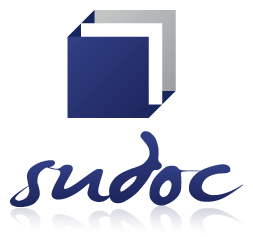The relations between market guidance, product and process innovation, and organizational performance
DOI:
https://doi.org/10.19094/contextus.v15i3.940Keywords:
Market orientation. Product Innovation. Process Innovation. Organizational Performance.Abstract
To achieve a higher organizational performance is desirable to ensure the permanence and growth of companies. However, a business environment marked by rapid technological and market changes demands from companies new responses or a combination of different strategies. The purpose of this study was to verify the influence of market orientation on product and process innovation, as well as of these on organizational performance. For this, a survey was carried out, applied to managers and owners of companies in the state of Rio Grande do Sul, and the Structural Equations Modeling technique was used to analyze the data. We found positive and significant relationships among the constructs studied, and observed that process innovation contributes more to organizational performance than product innovation. Thus, business managers who seek to stay and grow on the market must invest more in process innovations than in product innovations, as they contribute to cost reduction and product quality enhancement, giving companies a superior organizational performance.
References
APPOLINÁRIO, F. Metodologia da ciência: filosofia e prática da pesquisa. São Paulo: Pioneira Thomson Learning, 2006.
ARTZ, K. W.; NORMAN, P. M.; HATFIELD, D. E.; CARDINAL, L. B. A longitudinal study of the impact of R&D, patents, and product innovation on firm performance. Journal of Product Innovation Management, v. 27, n. 5, p. 725-740, 2010.
ATUAHENE-GIMA, K. Market orientation and innovation. Journal of Business Research, v. 35, n. 2, p. 93-103, 1996.
ATUAHENE-GIMA, K.; KO, A. An empirical investigation of the effect of Market orientation and entrepreneurship orientation alignment on product innovation. Organization Science, v. 12, n. 1, p. 54,74, 2001.
BAKER, W. E.; SINKULA, J. M. Market orientation and the new product paradox. The Journal of Product Innovation Management, v. 22, n. 6, p. 483-502, 2005.
BLAUG, M. A survey of the theory of process-innovations. Economica, v. 30, n. 117, p. 13-32, New series, 1963.
BYRNE, B. M. Structural Equation Modeling with AMOS: basic concepts, applications, and programming. New York: Taylor & Francis Group, 2010.
CARUNA, A.; PITT, L.; BERTHON, P. Excellence-market orientation link: some consequences for services firms. Journal of Business Research, v. 44, p. 5-15, 1998.
CHRISTENSEN, C. M.; BOWER, J. L. Customer power, strategic investment, and the failure of leading firms. Strategic Management Journal, v. 17, 197-218, 1996.
COOPER, R. G. Project newproduct: factors in new product success. European Journal of Marketing, v. 14, n. 5/6, p. 277-292, 1980.
COOPER, R. G. How new product strategies impact on performance. Journal of Product Innovation Management, v. 1, n. 1, p. 5-18, 1984.
DAMANPOUR, F. Organizational innovation: a meta-analysis of effects of determinants and moderators. Academy of Management Journal, v. 34, n. 3, p. 555-590, 1991.
DAMANPOUR, F.; GOPALAKRISHNAN, S. The dynamics of the adoption of product and process innovation in organizations. Journal of Management Studies, v. 38, n. 1, p. 45-65, 2001.
DELANEY, J. T.; HUSELID, M. A. The impact of human resource management practice on perceptions of organizational performance. Academy of Management Journal, v. 39, n. 4, p. 949-969, 1996.
DOUGHERTY, D. A practice-centered model of organizational renewal through product innovation. Strategic Management Journal, v. 13, n. 1, p. 77-92, 1992. Special issue.
FORNELL, C.; LARCKER, D. Evaluating structural equation models with unobservable variables and measurements error. Journal of Marketing Research, v. 17, n. 1, 39-50, 1982.
GATIGNON, H.; XUEREB, J. Strategic orientation of the firm and new product performance. Journal of Marketing Research, v. 34, n. 1, p. 77-90, 1997. Special issue.
HAIR JR., J. F. ; BABIN, B.; MONEY, A. H.; SAMOUEL, P. Fundamentos de métodos de pesquisa em administração. Tradução Lene Belon Ribeiro. Porto Alegre: Bookman, 2005.
HAIR JR., J. F. ; BLACK, W. C.; BARDIN, B. J.; ANDERSON, R. E. Multivariate Data Analysis. 7 ed., New Jersey: Prentice Hall, 2007.
HAIR JR., J. F.; BLACK, W. C.; BABIN, B. J.; ANDERSON, R. E.; TATHAM, R. L. Análise multivariada de dados. 6 ed., Porto Alegre: Bookman, 2009.
HAIR JR., J. F. ; BLACK, W. C.; BABIN, B. J.; ANDERSON, R. E. Multivariate data analysis: a global perspective. 7 ed. [S. l.]: Pearson Prentice Hall, 2010.
HAN; J. K.; KIM, N.; SRIVASTAVA, R. K. Market orientation and organizational performance: is innovation the missing link? Journal of Marketing, v. 62, n. 4, p. 30-45, 1998.
HULT, G. T. M.; HURLEY, R. F.; KNIGHT, G. A. Inovativeness: its antecedents and impact on business performance. Industrial Marketing Management, v. 33, p. 429-438, 2004.
HURLEY; R. F.; HULT, G. T. M. Innovation, market orientation, and organizational learning: an integration and empirical examination. Journal of Marketing, v. 62, p. 42-54, 1998.
KIM, W. C.; MAUBOURGNE, R. Blue ocean strategy. Harvard Business Review, p. 1-9, 2004.
KLINE, R. B. Principles and practice of structural equation modeling. 2 ed. New York:
The Guilford Press. 2005.
KLINE, R. B. Principle and practice of structural equation modeling. 3 ed. New York London: The Guilford Press, 2011.
KOHLI, A. K.; JAWORSKI, B. J. Market orientation: the construct, research propositions, and managerial implications. Journal of Marketing, v. 54, n. 2, p. 1-18, 1990.
KOHLI, A. K.; JAWORSKI, B. J. Market orientation: antecedents and consequences. Journal of Marketing, v. 57, n. 3, p. 53-70, 1993.
LAWTON, L.; PARASURAMAN, A. The impact of the marketing concept on new product planning. Journal of Marketing, v. 44, n. 1, p. 19-25, 1980.
LI, C. LIN, C.; CHU, C. The nature of market orientation and the ambidexterity of innovations. Management Decision, v. 46, n. 7, p. 1002-1026, 2008.
LI, H.; ATUAHENE-GIMA, K. Product inovation strategy and the performance of new technology ventures in China. Academy of Management Journal, v. 44, n. 6, p. 1123-1134, 2001.
LIN, R.; TAM, K.; GENG, Y. Market demand, green product innovation, and firm performance: evidence from Vietnam motorcycle industry. Journal of Cleaner Production, v. 40, p. 101-107, 2013.
LIU, J.; SU, J. How does market orientation affect product innovation in China's manufacturing industry: the contingent value of dynamic capabilities. In: INTERNATIONAL CONFERENCE ON EDUCATION TECHNOLOGY AND MANAGEMENT SCIENCE (ICETMS), 2012, Nanjing. Proceedings…, Atlantis Press, 2013, p. 165-169.
LUKAS, B. A.; FERREL, O. C. The effect of market orientation on product innovation. Journal of the Academy of Marketing Science, v. 28, n. 2, p. 239-247, 2000.
MALHOTRA, N. K. Pesquisa de marketing: foco na decisão. Trad. Opportunity Translations. Rev. técn. Maria Cecília Laudísio e Guilherme de Farias Shiraishi. 3ª ed. São Paulo: Pearson Prentice Hall, 2011.
MALHOTRA, N. K. Pesquisa de marketing: uma orientação aplicada. Bookman Editora, 2012.
MARCH, J. G.; SUTTON, R. I. Organizational performance as a dependent variable. Organization Science, v. 8, n. 6, p. 698-706, 1997.
MARDIA, K.V. Measures of multivariate skewness and kurtosis with applications.
Biometrika, v. 36, p. 519-530, 1970.
MAROCO, J. Análise de equações estruturais: fundamentos teóricos, softwares & aplicações. PSE, Lisboa, 2010.
MELVILLE, N.; KRAEMER, K.; GURBAXANI, V. Review: Information technology and organizational performance: an integrative model of it business value. MIS Quarterly, v. 28, n. 2, p. 283-322, 2004.
MITCHELL, W. Are more good things better, or will technical and market capabilities conflict when a firm expands? Industrial and Corporate Change, v. 1, n. 2, p. 327-346, 1992.
NARVER, J. C.; SLATER, S. F. The effect of a market orientation on business profitability. Journal of Marketing, v. 54, n. 4, p. 20-35, 1990.
NARVER, J. C.; SLATER, S. F.; TIETJE, B. Creating a market orientation. Journal of Market-Focused Management, v. 2, n. 3, p. 241-255, 1998.
OCDE – ORGANIZAÇÃO PARA A COOPERAÇÃO E DESENVOLVIMENTO ECONÔMICO. Manual de Oslo: diretrizes para coleta e interpretação de dados sobre inovação. 3 ed. [S. l.], 2005.
PALADINO, A. Investigating the drivers of innovation and new product success: a comparison of strategic orientations. The Journal of Product Innovation Management, v. 24, n. 6, p. 534-553, 2007.
PESTANA, M. H., GAGEIRO, J.N. Análise de dados para ciências sociais: a complementariedade do SPSS, 4ª ed. Sílabo, Lisboa, 2005.
PORTER, M. Capital disadvantage: America’s failing capital investment system. Harvard Business Review, n. 70, p. 65-82, 1992.
POWELL, T. C. Organizational alignment as competitive advantage. Strategic Management Journal, v. 13, p. 119-134, 1992.
REINARTZ, W.; KRAFFT, M.; HOYER, W. D. The customer relationship management process: its measurement and impact on performance. Journal of Marketing Research, v. 41, n. 3, p. 293-305, 2004.
ROESCH, S. M. A. Projetos de estágio e de pesquisa em administração: guia para estágios, trabalhos de conclusão, dissertações e estudos de caso. Col. Grace Vieira Becker, Maria Ivone de Mello. 3ª ed. 8ª reimp. São Paulo: Atlas, 2013.
ROSENBUSCH, N.; BRINCKMANN, J.; BAUSCH, A. Is innovation always beneficial? A meta-analysis of the relationship between innovation and performance in SMEs. Journal of Business Venturing, v. 26, n. 4, p. 441-457, 2010.
SALVADÓ-AMORES, J.; CASTRO, G. M.; NAVAS-LÓPEZ, J. E. Green corporate image: moderating the connection between environmental product innovation and firm performance. Journal of Cleaner Production, v. 83, p. 356-365, 2014.
SCHROEDER, D. M. A dynamic perspective on the impact of process innovation upon competitive strategies. Strategic Management Journal, v. 11, n. 1, p. 25-41, 1990.
SCHUMPETER, J. A. The theory of economic development: an inquiry into profits, capital, credit, interest, and the business cycle. Cambridge: Harvard University Press, 1934.
SLATER, S. F.; NARVER, J. C. Does competitive environment moderate the market orientation-performance relationship? Journal of Marketing, v. 58, n. 1, p. 46-55, 1994.
SLATER, S. F.; NARVER, J. C. Market orientation, customer value, and superior performance. Business Horizons, v. 37, n. 2, p. 22-28, 1994.
SLATER, S. F.; NARVER, J. C. Market orientation and the learning organization. Journal of Marketing, v. 59, n. 3, p. 63,74, 1995.
SOK, P.; O’CASS, A. Examining the new product innovation-performance relationship: optimizing the role of individual-level creativity and attention-to-detail. Industrial Marketing Management, v. 47, p. 156-165, 2015.
TANAKA, J. S. Multifaceted conceptions on fit in structural equations modeling. In:
BOLLEN, K. A.; LONG, J. S. (Ed). Testing structural equation models. Newbury Park:
Sage, p. 10-39, 1993.
VERHEES, F. J. H. M.; MEULENBERG, M. T. G. Market orientation, innovativeness, product innovation, and performance in small firms. Journal of Small Business Management, v. 42, n. 2, p. 134-154, 2004.
Downloads
Additional Files
Published
How to Cite
Issue
Section
License
The authors, while doing the submission, accept the notice below:
We authors hold the copyright related to our paper and transfer Contextus journal the right for the first publication with a Creative Commons’ international license of the modality Attribution – Non-commercial 4.0, which in turn allows the paper to be shared providing that both the authorship and the journal’s right for initial release are acknowledged.
Furthermore, we are aware of our permission to take part in additional contracts independently for non-exclusive distribution of the version of our work published in this journal (e.g. publishing it in an institutional repository or as a book chapter), while acknowledging both the authorship and the journal’s initial publication.
We also certify that the paper is original and up to this date has not been released in any other journal, Brazilian or of another nationality, either in Portuguese or another language, as well as it has not been sent for simultaneous publication in other journals.
Last, we not only know that plagiarism is not tolerated by Contextus but also certify the paper presents the sources of passages from cited works, including those authored by ourselves.









3.png)


1.jpg)



1.jpg)


1.jpg)






.jpg)



1.jpg)

1.jpg)


1.jpg)

1.jpg)
1.jpg)
2.png)




1.jpg)
2.jpg)

1.jpg)





1.jpg)


1.jpg)
1.jpg)
